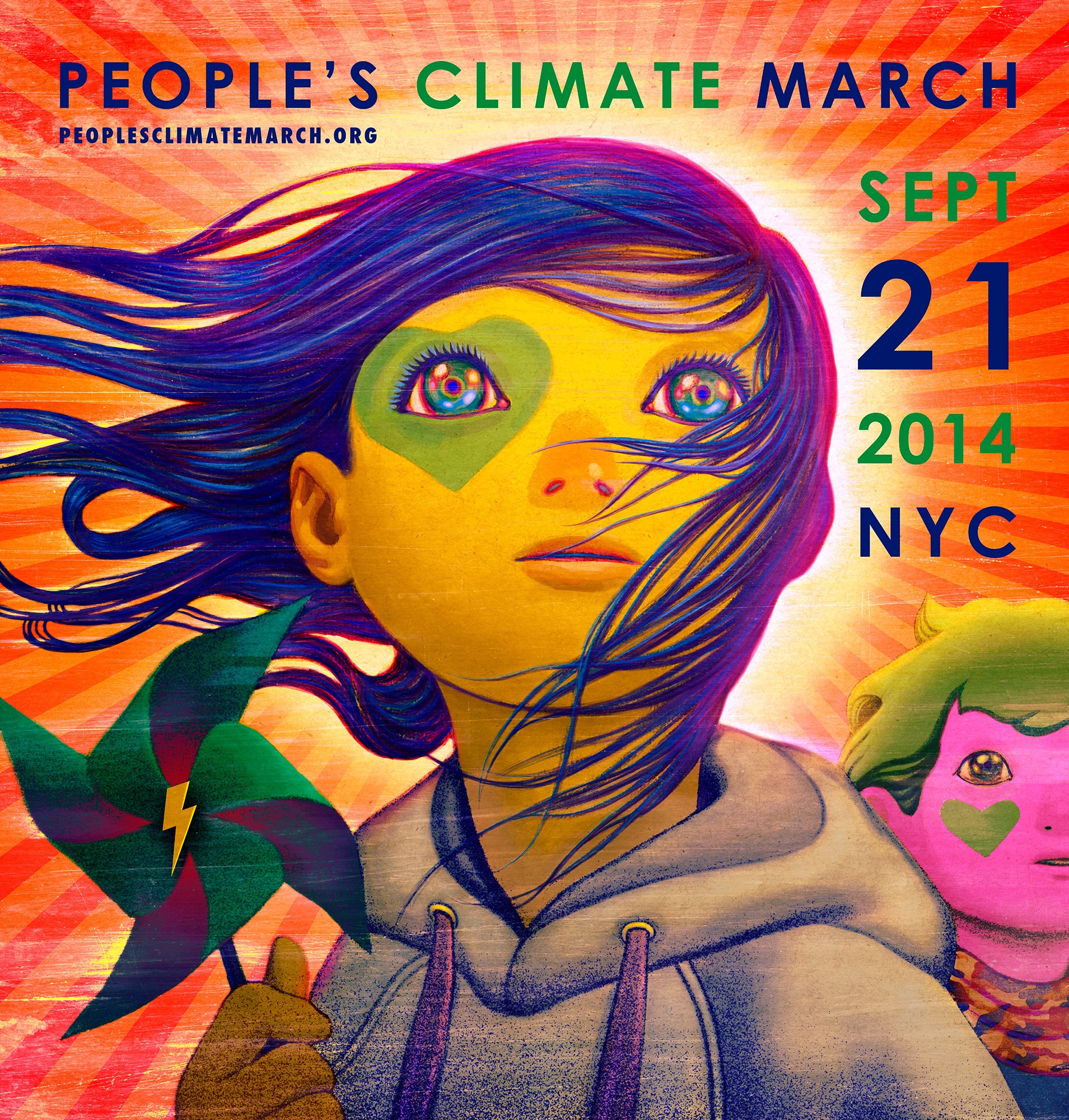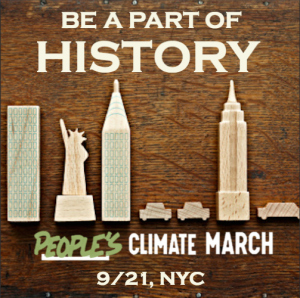New York gets psyched for the People’s Climate March

New Yorkers are in for an exciting moment in history, poised to make a major contribution to the generations that come after us. The People’s Climate March is gearing up to be a massive march in support of sustainability and environmental justice. It will be a clear message to the United Nations that the world’s people– represented in the cosmopolitan city of New York– are forming a bona fide social movement. People want to live on a safe, clean planet. They went to face up to the debt of industrialization and make the hard decision to stop, and hopefully reverse, the adverse effects of climate change.
Last month, Robert Jay Lifton wrote in the New York Times that what we are experiencing is part of an American “climate swerve.” Lifton, a psychohistorian best known for his work on the trauma in the aftermath of the dropping of atomic bombs on Japan, has likened the new consciousness in America about climate change to the social movement around nuclear disarmament in the 1980s. It is a swerve toward a popular engagement with the ethical, economic, and political considerations of the man-made phenomenon of global warming and all its devastations, past, present, and future. It is a swerve that hopes to call out climate change deniers and put pressure on politicians to think urgently and creatively about solutions.
Lifton explains that the swerve is a product of the “drumbeat” of natural disasters on TV. He writes:
Responding to the climate threat — in contrast to the nuclear threat, whose immediate and grotesque destructiveness was recorded in Hiroshima and Nagasaki — has been inhibited by the difficulty of imagining catastrophic future events. But climate-related disasters and intense media images are hitting us now, and providing partial models for a devastating climate future.
 The problem, in essence, has become easily imaginable (New Yorkers: think Hurricane Sandy). Couple this with new economic thinking that has begun to devalue fossil fuels as resources because of the externalities involved in using them– the cost of destroying our habitat– and the ethical arguments begin to emerge. Is the use of carbon-based sources of energy too high a price to pay in the long run because we are destroying our very home? Environmentalists have long answered this question with a resounding “yes,” but a growing segment of the general public now feels this way, too.
The problem, in essence, has become easily imaginable (New Yorkers: think Hurricane Sandy). Couple this with new economic thinking that has begun to devalue fossil fuels as resources because of the externalities involved in using them– the cost of destroying our habitat– and the ethical arguments begin to emerge. Is the use of carbon-based sources of energy too high a price to pay in the long run because we are destroying our very home? Environmentalists have long answered this question with a resounding “yes,” but a growing segment of the general public now feels this way, too.
In the days leading up to The People’s Climate March, the SEJ faculty have been wowed by the sheer number of events– from symposiums to film screenings– that will be happening in the week leading up to the march. Our events page has showcased some of the ones we are involved in, on campus or off, or find particularly interesting or important. But our little website has not been able to capture the sheer magnitude of events in the city, so check out this events calendar for all the possibilities.
The People’s Climate March, many are saying, will be the defining event of the climate swerve. Luckily, there is a place in history for everyone who can be in New York City on September 21 to join the throngs who will demand change. And there is a place in history for all those unable to be there, but who continue to pressure their politicians for pro-environment policies, who recycle religiously, support environmental groups, and who think creatively about local solutions to the macro problem of climate change. This is a big moment, and together we can make a difference.